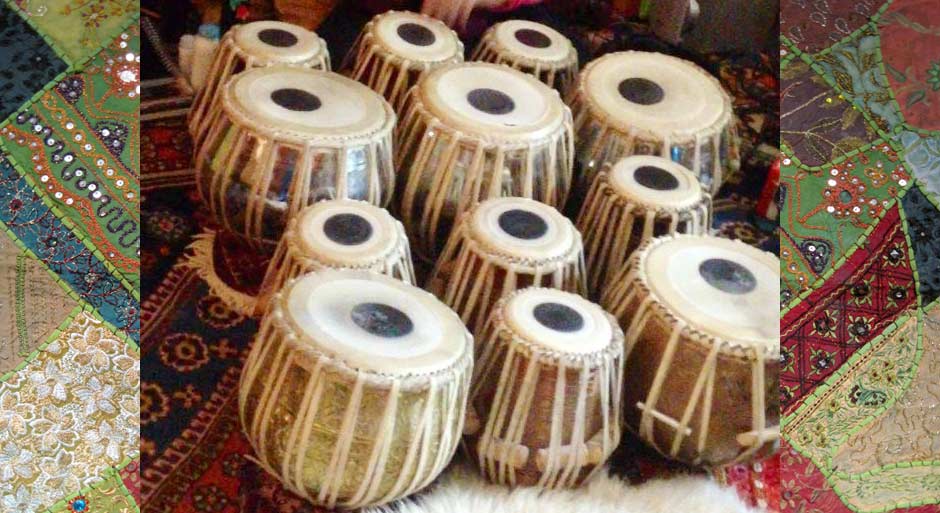What is Tabla?
Tabla are highly complex drums used in Eastern classical music. They are played with the fingers and the heel of the hand — skin on skin. They were invented in the 13th century by Amir Khusro, an Afghani Sufi poet and musician.
The smaller drum is called the dayan (meaning “right”) and the larger drum is called the bayan (meaning “left”). Right and left refer to the hands usually used to play each tabla. Dayans are made in a range of sizes, each tuned with a different range. The bayan has a rich bass tone.
Both drums are covered with a skin. The dark circular center of each drum head is created with a paste mixed with metal powder. The tabla are extremely difficult instruments to learn to play, requiring many years of study.
Tabla for Two also incorporates the dholak, a South Asian hand-drum. The dholak does not have the exact tuning of the tabla, nor does it have the metal paste center circle of the tabla. The pitch of the dholak is determined by its size.
Tabla for Two performs totally new compositions written by Masood Omari for two tabla players. Abigail Adams Greenway is playing the three dyan, while Masood is playing the bayan, dayan and the dholak. The compositions are highly complex classical beats — mathematical rhythms with melody. The resulting music is nothing short of mesmerizing.
Sources:
http://en.wikipedia.org/wiki/Tabla
http://en.wikipedia.org/wiki/Dholak

